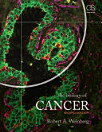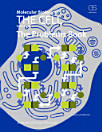Thermobiology
J.S. Willis
1997 api. · Advances in Molecular and Cell Biology 19. liburua · Elsevier
Liburu elektronikoa
292
orri
family_home
Egokia
info
reportBalorazioak eta iritziak ez daude egiaztatuta Lortu informazio gehiago
Liburu elektroniko honi buruz
Notwithstanding widespread studies and even several biological journals devoted to temperature, it is difficult to perceive a field of thermobiology as such. Interest in the effects of temperature of biological systems is fragmented into specific thermal ranges and often connected with particular applications: subzero cryobiology and preservation of cells and tissues or survival of poikilotherms, para-zero cryobiology and preservation of whole organs and survival of whole animals, intermediate ranges and physiological adaption and regulation, high temperatures and use of heat for killing cancer cells, very high temperatures and limits of biological structure. Yet it has not always been so, and there are good reasons why it need not remain so. General and comparative physiologists such as W.J. Crozier, H. Precht, J. Belehradek, F. Johnson, C.L. Prosser, and others have sought throughout this century to lay foundations for unified approaches to temperature in biological systems.Recent findings also serve to suggest principles and processes that span the range of temperatures of biological interest. Microviscosity of membranes is an issue originally of interest to low temperature biologists but with relevance to limiting high temperatures; conversely for protein structure. Certain "heat shock proteins" now appear to be responses to generalized stress, including low temperature.Inevitably, the chapters of this book reflect the "zonal" character of thermobiology: two chapters (by Storey and Raymond) deal with protection against subfreezing temperatures; three (Hazel, membrane structure, Dietrich, microtubular structure, and Kruuv, cell growth) deal with the effects of and modulation to cool-to-moderate superfreezing temperatures, one (Willis) with modulation (of membrane ion transport) to moderate-to-high temperatures and two (Li, heat shock proteins and Lepock, proteins in general) with stressfully high temperatures. Explicit in each of these chapters, however, are principles and issues that transcend the parochialism of the temperature range under consideration.
Baloratu liburu elektroniko hau
Eman iezaguzu iritzia.
Irakurtzeko informazioa
Telefono adimendunak eta tabletak
Instalatu Android eta iPad/iPhone gailuetarako Google Play Liburuak aplikazioa. Zure kontuarekin automatikoki sinkronizatzen da, eta konexioarekin nahiz gabe irakurri ahal izango dituzu liburuak, edonon zaudela ere.
Ordenagailu eramangarriak eta mahaigainekoak
Google Play-n erositako audio-liburuak entzuteko aukera ematen du ordenagailuko web-arakatzailearen bidez.
Irakurgailu elektronikoak eta bestelako gailuak
Tinta elektronikoa duten gailuetan (adibidez, Kobo-ko irakurgailu elektronikoak) liburuak irakurtzeko, fitxategi bat deskargatu beharko duzu, eta hura gailura transferitu. Jarraitu laguntza-zentroko argibide xehatuei fitxategiak irakurgailu elektroniko bateragarrietara transferitzeko.







